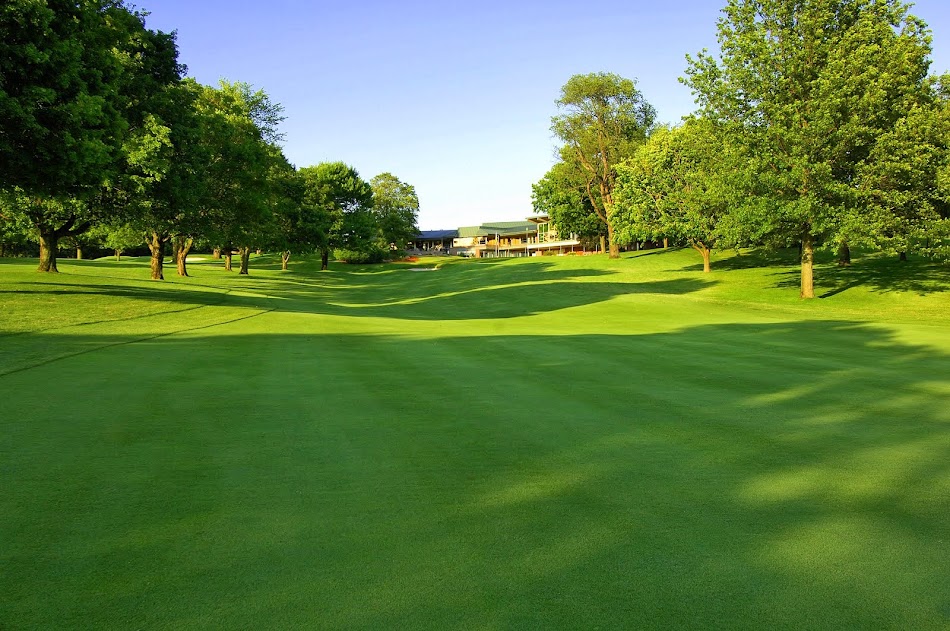 |
| Golf shop entrance tulips |
Spring finally sprung here in the last month, so apologies for the delay between blog posts. The staff and I have been quite busy preparing beds, bunkers, and turf into the in-season shape that they are accustomed to. Seeding and sodding of areas left from our winter tree work should be wrapped up next week. One large item we accomplished is Elcona's renewal application to be one of 6 Certified Golf Course Sanctuaries in the state of Indiana. I am quite proud of the club's accomplishments within the last two years, from helping care for the Seed to Feed garden, to planting wildflower areas for increased pollinator habitat, to being smarter users of water and inputs to maintain the golf course. We should hear in July if Audubon International agrees with my sentiments, and I will keep you posted.
 |
| Harold Marner on 16 aerifying |
 |
| Steve Ott in the snow on 16 |
Our staff completed aerification earlier this month, in less than ideal Spring Break weather. I tell people time and time again how lucky I have to have such dedicated staff members. A special thank you to Steve Ott and Harold Marner for sitting on the tractors for a couple of quite testy days outside.
 |
| Check plot on #13 |
 |
| Close up of seed heads |
Finally, I am sure you have noticed that the "Seeding Season" is here for the
Poa that composes the majority of turf on the greens. As great as
Poa annua is as a putting surface, one drawback is its annual seedhead production.
Poa annua is a winter annual, meaning it germinates in the fall, overwinters, and produces seeds in the spring for its next generation. Think of Poa as a backwards annual flower you would plant in your landscape.
 |
| Poa seedhead production |
 |
| Plywood used to create check plot on #1 |
Using a temperature based schedule, we have applied three applications of growth regulator to
suppress, not eliminate, these seedheads from impacting ball roll. As the first picture to the left shows, I left 5 areas on the course untreated, as a check plot, to assess the success of this year's applications. All of the checkplots show we have had a reasonable amount of success in limiting the amount of seeds impacting play. SInce the process is not perfect, we try to further reduce their impact with topdressing applications and additional rolling.
If you are interested, the check plots on located on the large practice green, #1, #10, and #13 green. If you have any questions, please contact me at ryan@elconacc.com. Thanks, and have a great week!
Ryan







